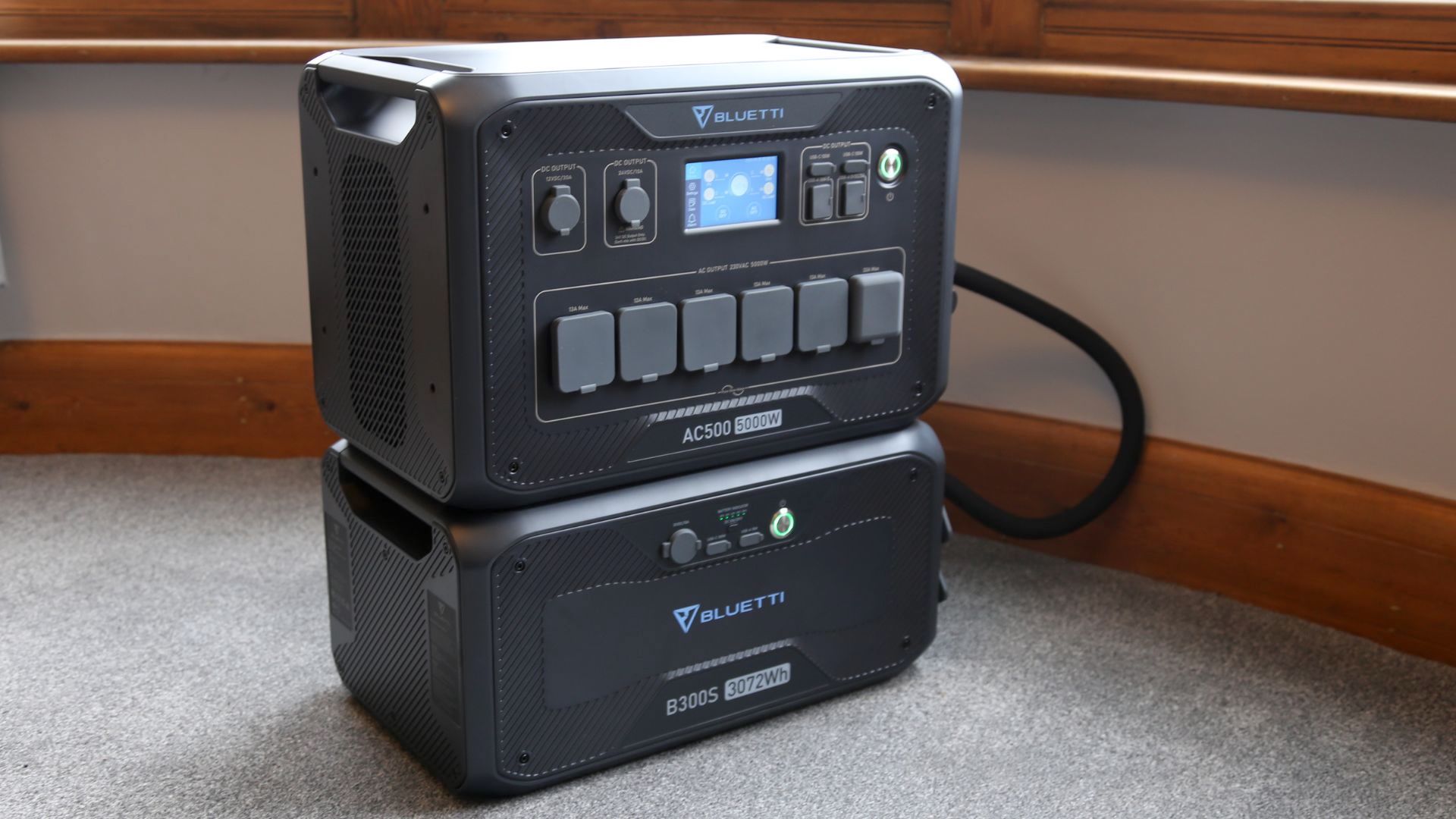
Bluetti AC500 + B300S review in a sentence: This power station and battery pack offer multiple ins and outs and enough massive storage capacity to get you through an emergency or to provide serious off-grid power.
Do you need some serious off-grid power? With lots of ins and outs, a massive storage capacity and a useful modular design for future expansion, the Bluetti AC500, together with at least one B300S battery, is one of the best portable power stations ready to take on power cuts, outages, motorhomes, serious camping trips, off-grid cabins and glamping sites. Or just for living off solar power – if you also get some solar panels.
Buying the AC500 on its own doesn’t make much sense. Simply an inverter (changing DC to AC), it has to be used with either Bluetti’s (older) B300 or (new) B300S battery packs. Put the two together, and its huge storage capacity and 15 ins and outs make it big, bulky and brilliant. However, there are some things about it that make it unsuitable for some users. Here’s what you need to know about the Bluetti AC500 and B300S.
Bluetti AC500 + B300S review: Price and availbility
Unless you're upgrading from Bluetti's AC300, the AC500 and B300S are best purchased together for £4,499 from Bluetti UK (launched in February 2023) or $4,799 from Bluetti US (launched in late 2022). Both have different plugs, so be sure to choose the one that suits the location it will be used in. Check out Bluetti's Australian website for more info on availability and pricing down under.
You can buy the two components separately, with the AC500 selling for £2,599/$2,599 and then B300S for £2,299/$2,299. The two components are sold separately because they each do something radically different.
On its own, the B300S acts as a huge battery for smartphones, laptops and other smaller devices that recharge via USB-C (100W), USB-A (18W) and 12V (10A). The AC500 is simply an inverter, bringing AC power to the party – complete with five UK plug sockets (the US version has six).
The AC500 and B300S are also sold bundled with a couple of large Bluetti PV350 solar panels, which is worth considering if you want to try your hand at being energy independent.
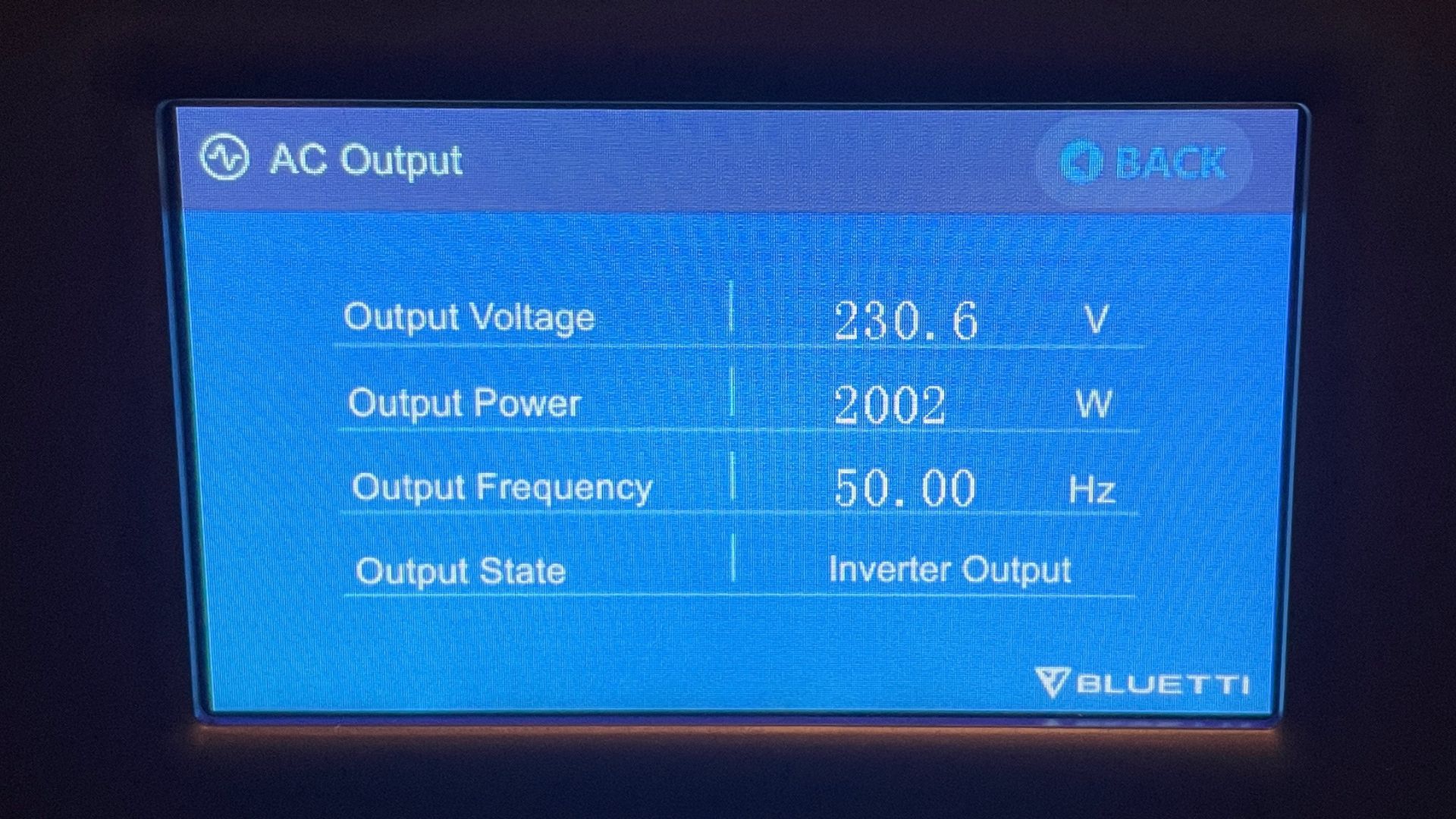
Bluetti AC500 + B300S review: Specifications
- Capacity: 3,072Wh (B300S)
- Weight: 30kg / 66.2lbs (AC500), 38kg / 83.8lbs (B300S)
- Measurements: 358x325x520 mm / 14.1x12.8x20.5” (AC500), 266x320x520mm / 10.5x12.5x20.5” (B300S)
- Solar: VOC 12-150VDC, 15A (3,000W max.)
- Outputs: 3x 120V/20A, 1x 120V/30A L14-30, 1x 120V/30A TT-30, 1x 120V/50A NEMA14-50, 2x USB-A (5V/3A), 2x USB-A (18W), 2×USB-C (100W), RV (12V/30A, car outlet (24V/10A), 2x wireless charging pads (15W) (AC500), USB-C (100W), USB-A (18W), 12V (10A) (B300S)
- Inputs: AC, solar (VOC 12-150VDC, 15A), cigarette lighter port (12/24V (AC500), AC, solar (VOC 12-60VDC, 10A), 12V (B300S)
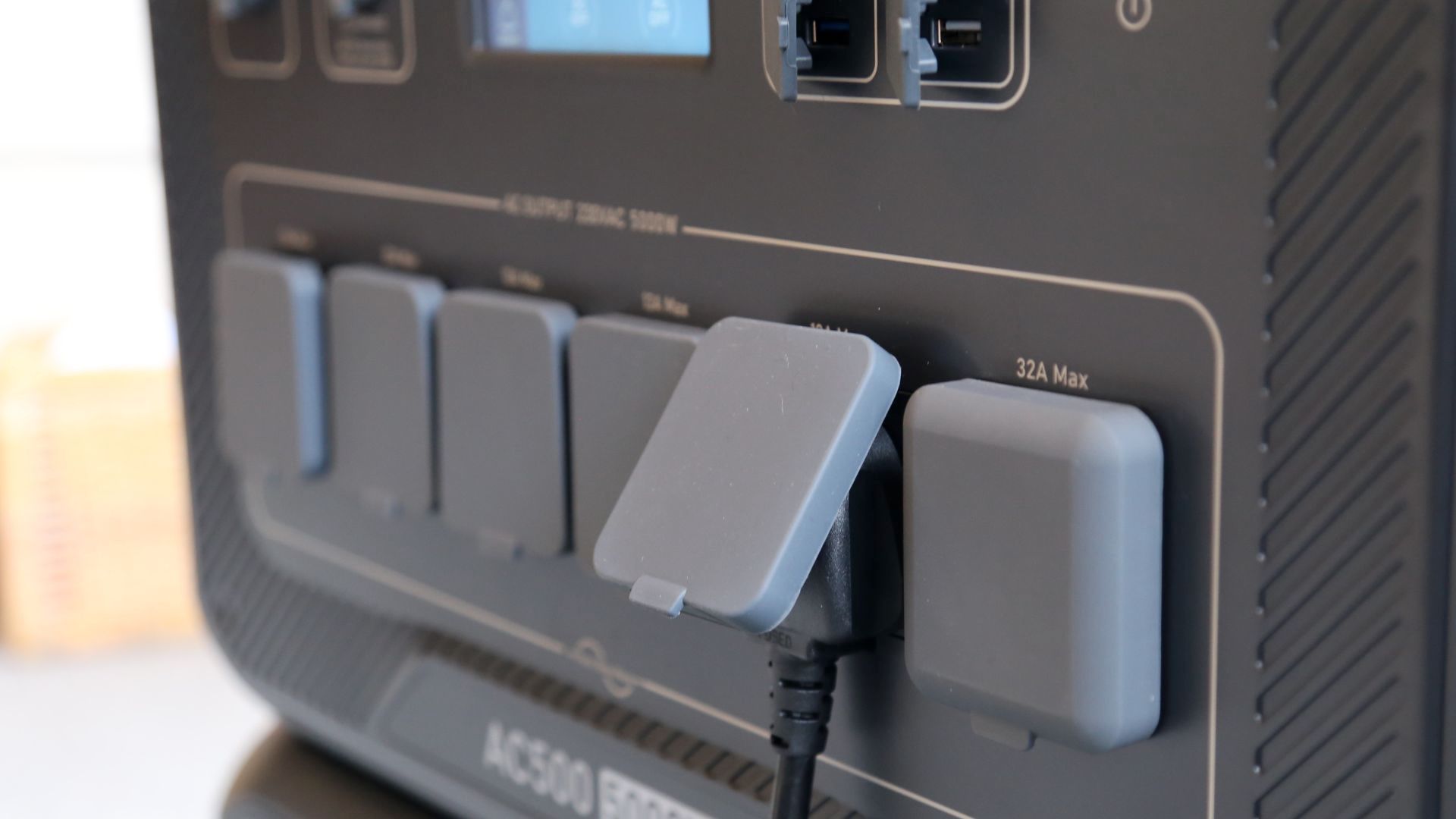
Bluetti AC500 + B300S review: Features
This Bluetti set-up is designed to provide enough power for a home in an emergency, but as well as providing the raw storage capacity it also presents a plethora of ins and outs to cope with all kinds of gear. There are 12 outputs on AC500 and three more on the B300S – so 15 in total.
With the basic AC500 and one B300S unit, you get five 13-amp AC outputs on the former – alongside a mess of USB ports and a couple of wireless recharging pads on top – and 3,072Wh in the latter’s Li-Po battery. You can expand to add up to six B300S units (there are battery expansion slots on the right-hand side) to create a maximum 18,432Wh capacity, but space-wise, that would have a massive footprint – though it’s all stackable.
Aside from the versatility and modular design, the other standout features include a rated power of 5,000W (and 10,000W surge) and quick charge; the B300S takes about two hours to recharge from the mains.
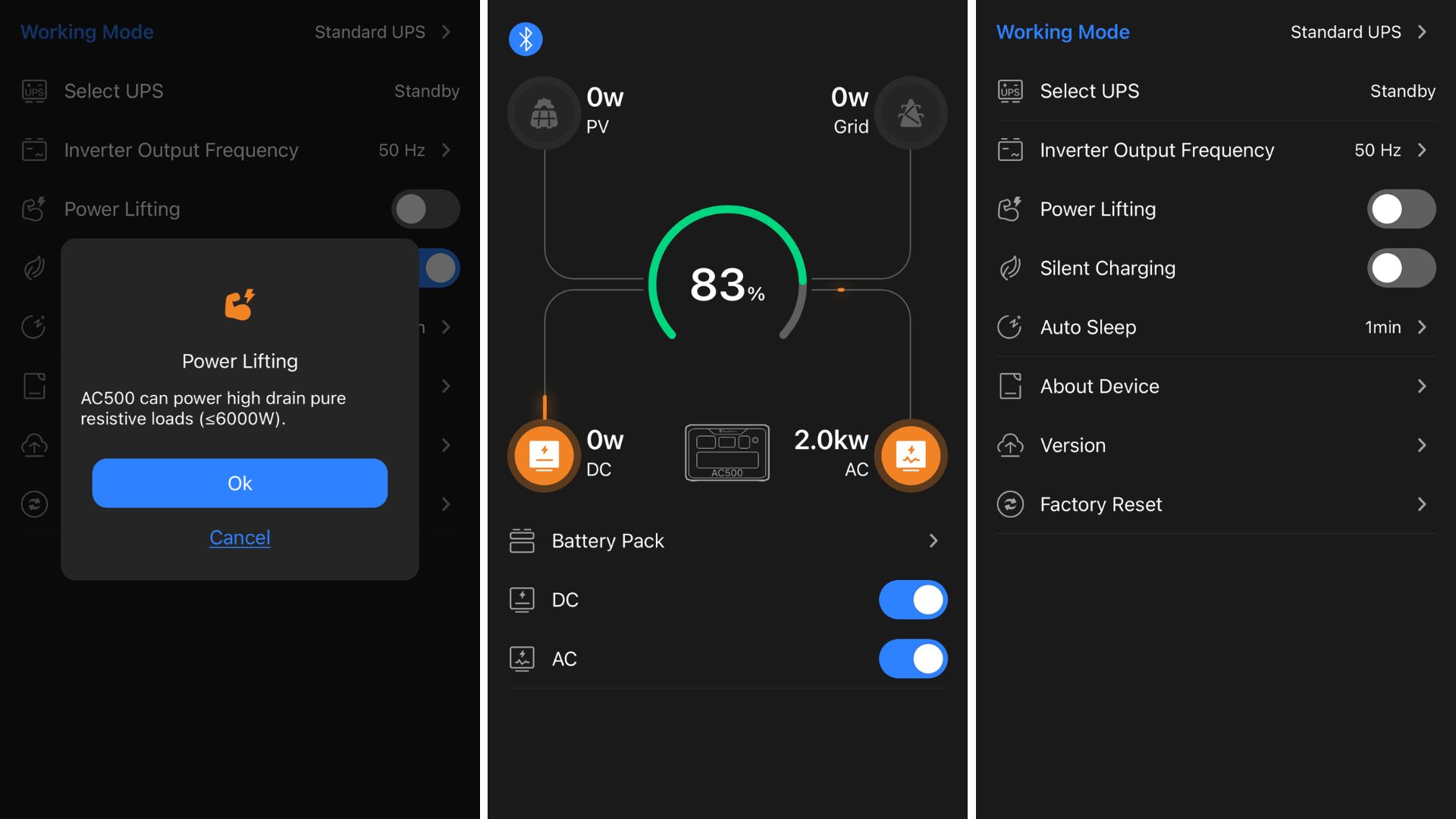
Bluetti AC500 + B300S review: Setup and ease of use
Build quality is excellent, and there are built-in handles, but even with its most basic architecture, this two-pronged product is heavy. With the AC500 weighing 30kg/66.2 lbs and the B300S 38kg/83.8 lbs, these are not the kinds of components that are fit for travel. The best way to use the AC500 + B300S as a backup power station for home and leave it in one place to recharge either from the mains or from solar panels.
Sure, you can just about get them into a vehicle, but it’s awkward and potentially dangerous even as a two-person job. If you’re considering using this while travelling, then you might want to invest in a folding trolley. If used while travelling, it can also be topped up using a 12V cigarette lighter output in a vehicle, which is slow but useful for anyone planning a major off-grid expedition.
In the AC500 box are cables to charge the units from the mains (which can be upgraded for ultrafast 80-minute charging), from solar panels and to drip-charge from a car cigarette lighter. It’s the B300S that comes with the real annoyance – a cable to link the two units, which is critical yet surprisingly heavy and bulky. It’s unsightly and actually means you need to give a lot more space to the product than its footprint suggests. It locks into position at both ends. If you want a whopping 5kW system, you will need to invest in two B300S units.
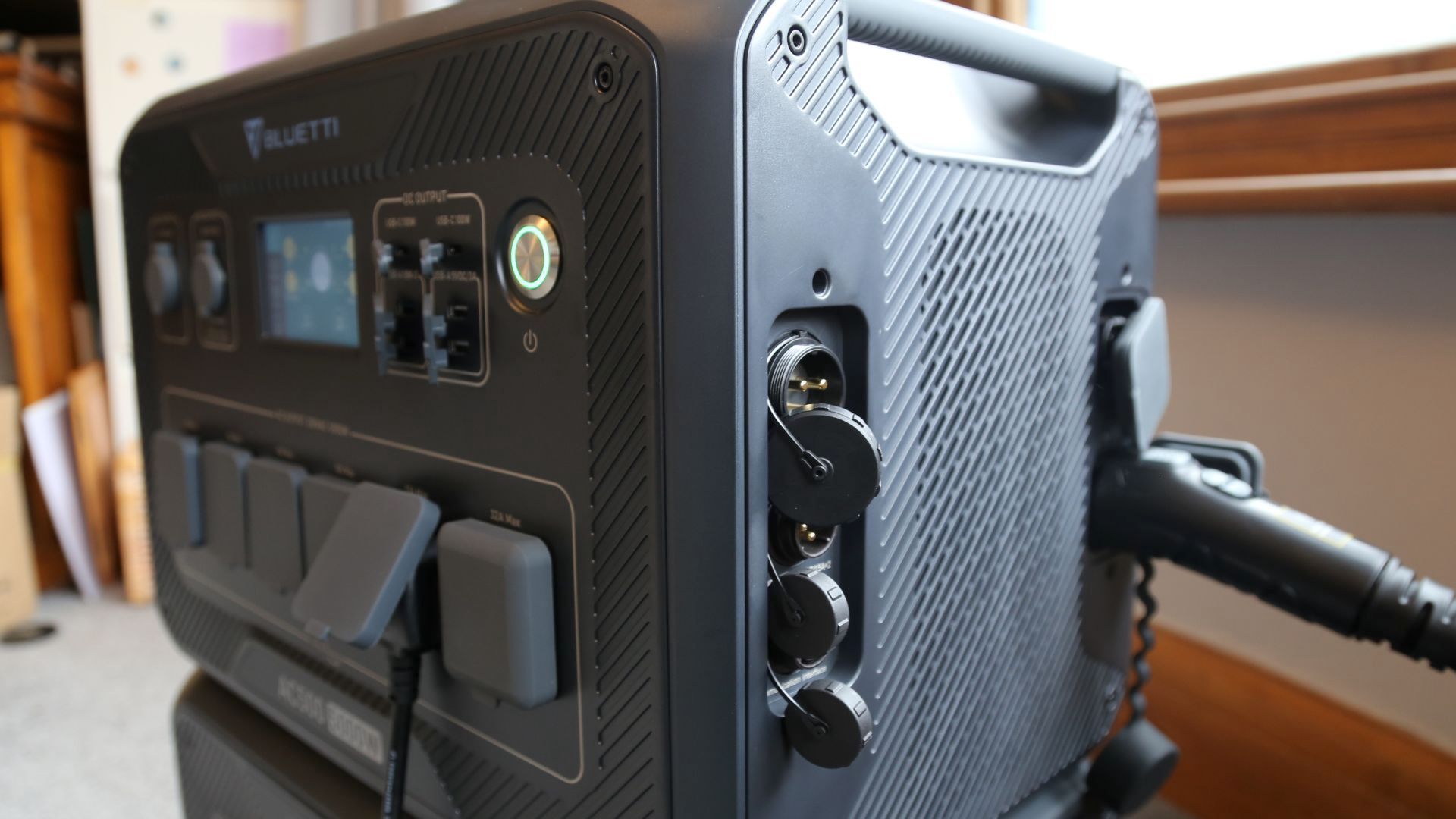
Bluetti AC500 + B300S review: Performance
Although it can technically be used while travelling, this product is far more suitable to be installed in a home to be a (possibly solar-powered) backup power station. As such, it’s ridiculously well endowed with ins and outs. During our tests, its five UK 13 amp sockets were easily able to power everything we threw at it, from a heater to an LED TV. It makes a rather loud hum when any AC output source is attached – about 45 decibels close to the unit – and, intermittently, even louder when recharging.
There are also multiple DC outputs for smaller gadgets. On the AC500, there’s a souped-up 24V car cigarette lighter-style charger alongside six USB sockets, two of which are USB-C and capable of sending 100W into laptops and smartphones. The B300S adds another USB-C 100W output.
The LCD display is lacklustre. The white lettering on blue and yellow backgrounds isn’t easy to read. The menus are also stuffed with jargon (‘PV’, which stands for photovoltaic, rather than simply ‘solar’), but if you know your jargon and you’re comfortable choosing your output voltage, then it’s not difficult to use.
However, I found the app much easier to read and understand. A combination of on-device display and the app make it relatively easy to monitor which outputs are being used, how much energy is being expended and much more besides, but it doesn’t display how long you have until the B300S runs out of juice.
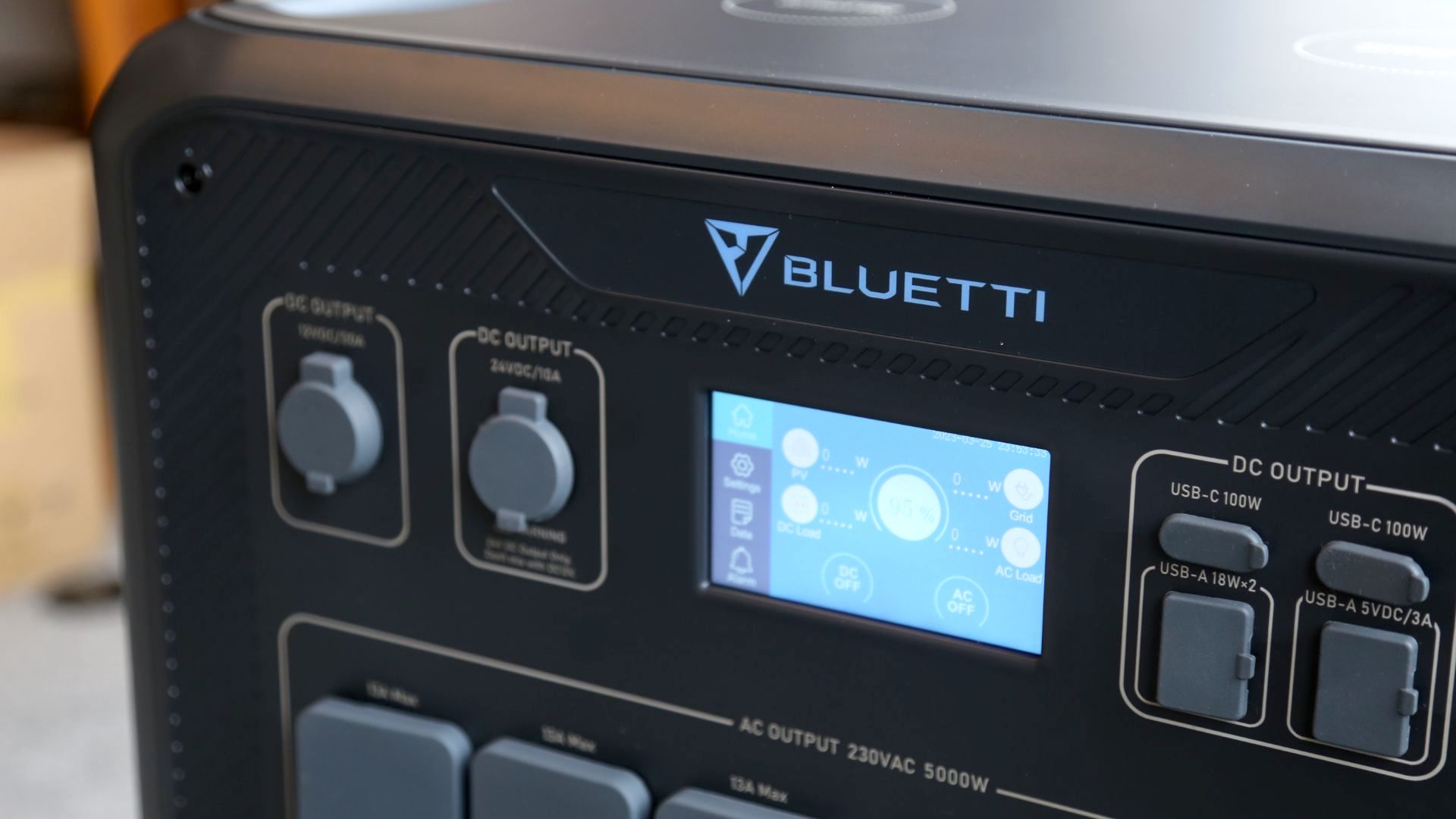
Bluetti AC500 + B300S review: Verdict
Highly capable, hugely customisable, and one of the heaviest power stations we’ve ever tested, the Bluetti AC500 + B300S is worth considering in several different guises, depending on your intended use. You can add solar panels for total off-grid freedom and upgrade by adding B300S units as you need them, with its 15 outputs – including five or six AC sockets – creating a truly versatile system. Whatever you purchase should ideally remain in one place because the Bluetti AC500 + B300S is a heavyweight option in all senses. Since it can act as nothing short of a home backup generator, we think it’s worth the space, but it would be a mistake to think of it as portable.
Bluetti AC500 + B300S review: Also consider
The Goal Zero Yeti 1500X is an all-in-one device that offers 1,516Wh – about half the Bluetti AC500 + B300S – but only gives you one AC power socket. It’s great for powering smaller gadgets and the occasional high-power device.
The same is true for the EcoFlow RiverMax, which has two 288Wh batteries, one of which can be removed if you want to lighten the load. It’s also got a built-in LED light for use around camp. Both can be used with solar panels.







